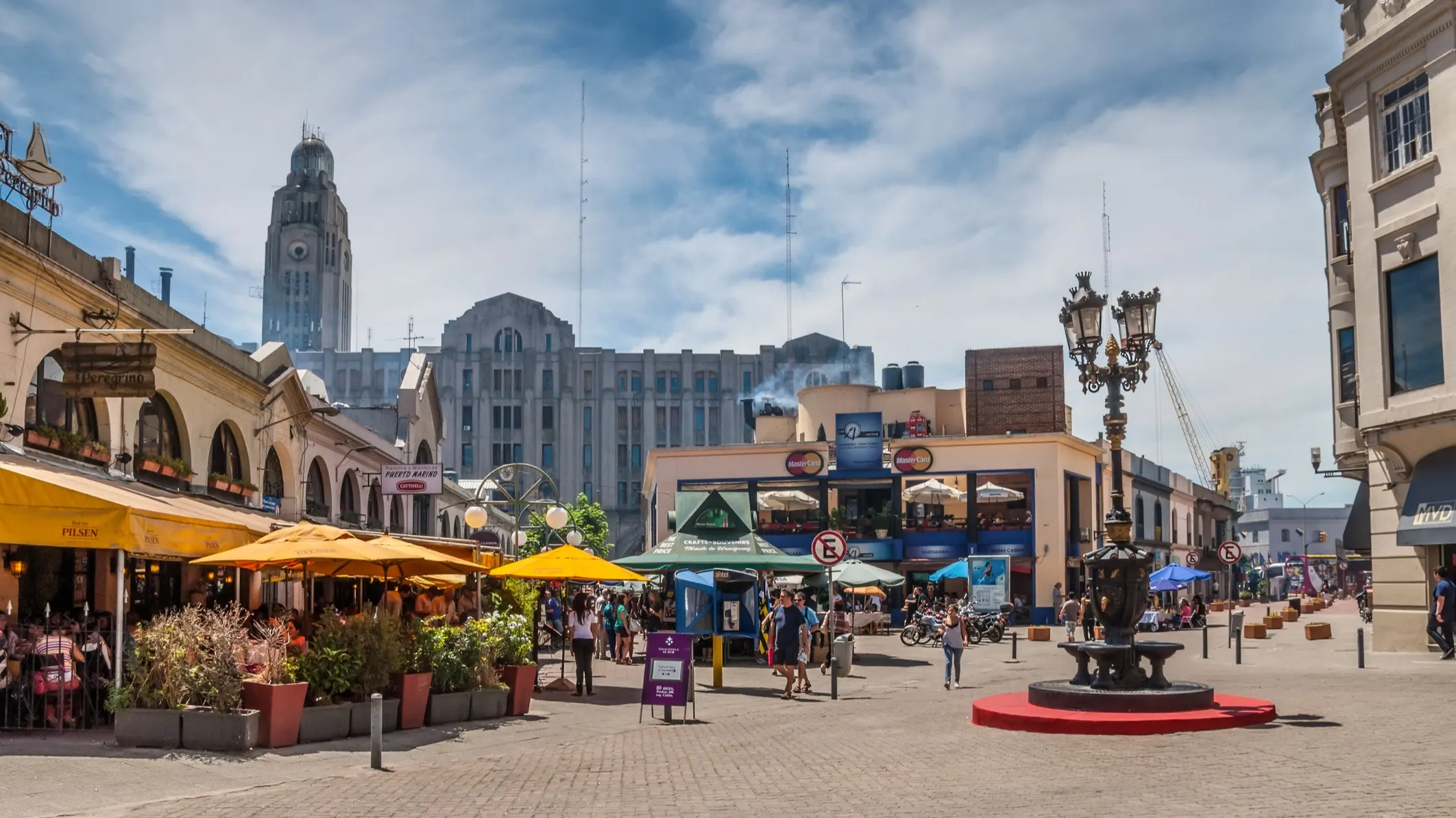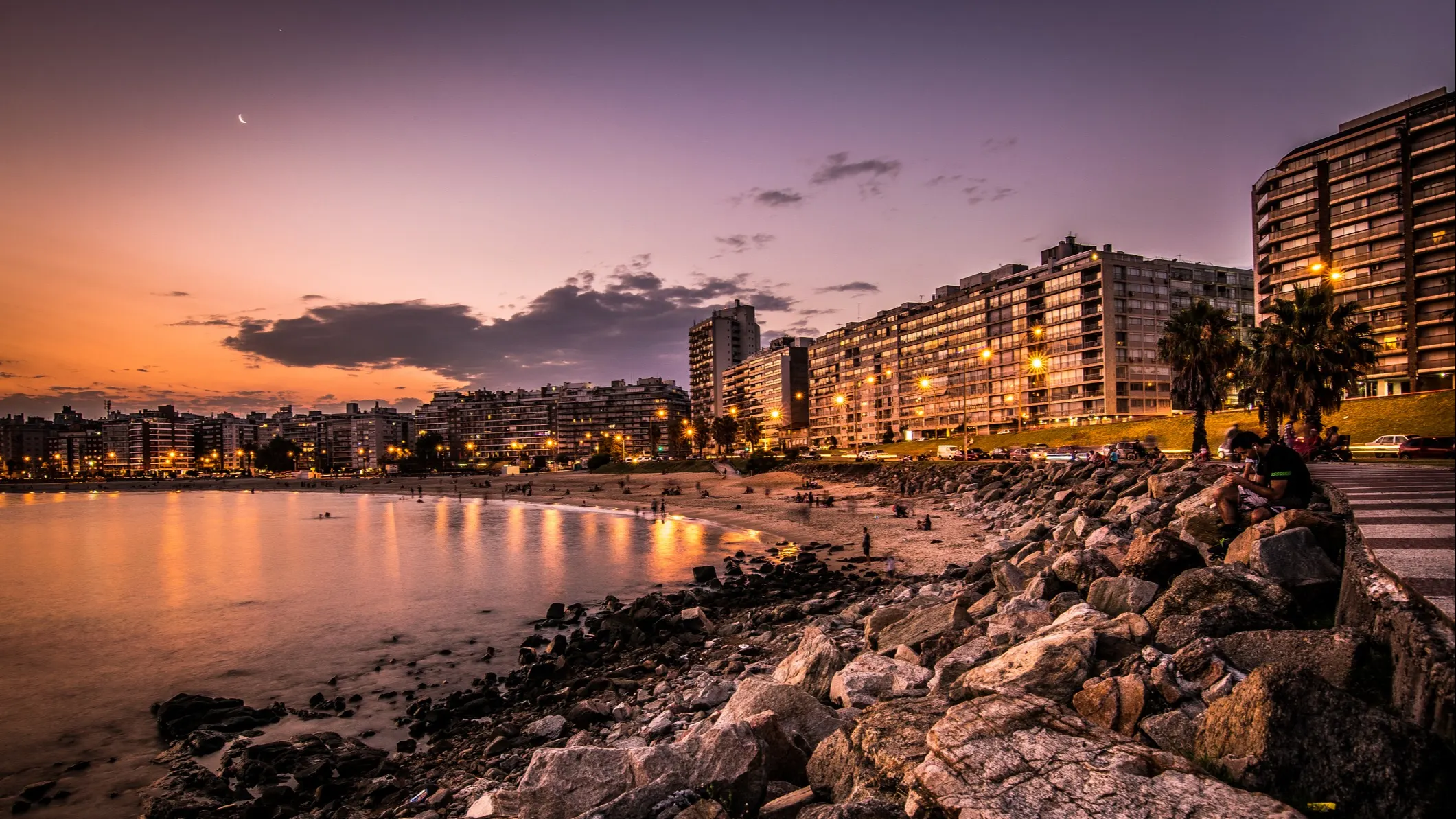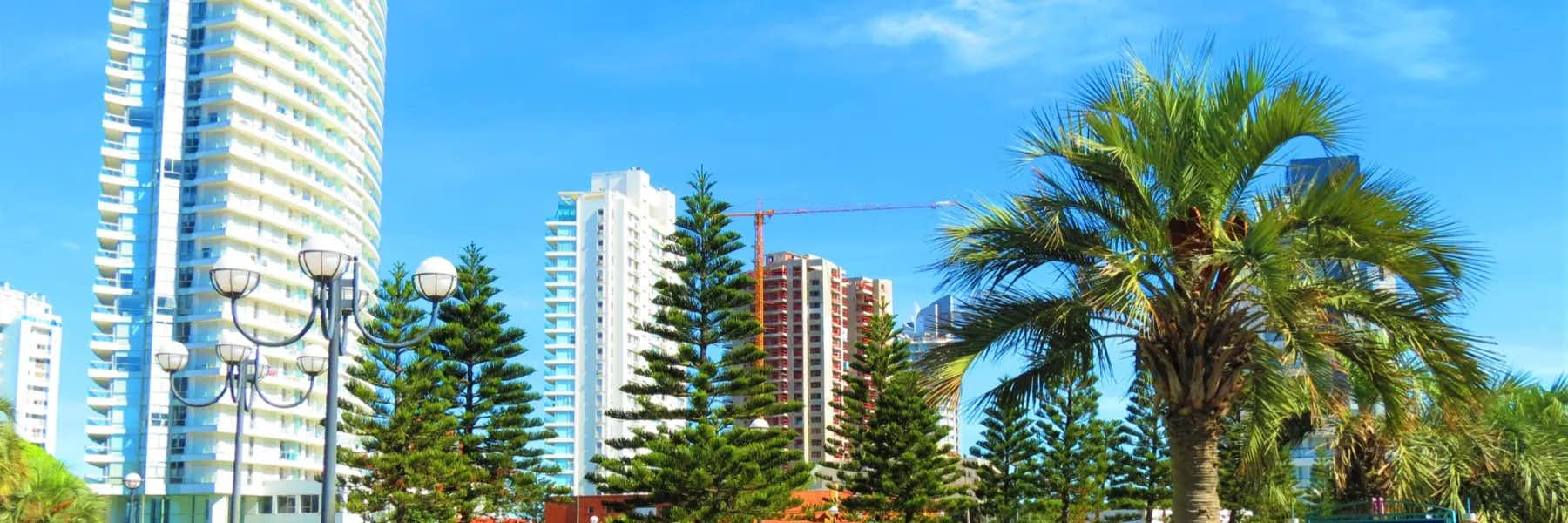You’ve probably heard of Uruguay—a land of natural beauty, first-world comforts, and social stability.
But what about the cost of living in Uruguay?
Compared to the U.S., Uruguay isn’t, across-the-board, less expensive. Some things cost more, and some things cost less. (For example, energy, manufactured goods, and processed foods cost more.)
However, most retirees' most significant living expenses are housing, transportation, and healthcare. And in Uruguay, it’s possible to save big in all three of these areas—meaning an overall cost of living far cheaper than in the U.S.

Housing
The two most popular locations for expats in Uruguay to settle are:
Montevideo, the nation’s capital, and home to 40% of Uruguay’s total population of 3.4 million.
And Punta del Este, a beach resort and university town with a growing full-time population.
Get Your Free Report on the World's Best Places to Retire in 2026
Get Your Free Report on the World's Best Places to Retire in 2026
Simply enter your email address below to sign up for our free daily postcard e-letter and we'll also send you a FREE report on The World's Top 10 Retirement Havens for 2026.

By submitting your email address, you will receive a free subscription to IL Postcards, Overseas Dream Home, The Untourist Daily and special offers from International Living and our affiliates. You can unsubscribe at any time, and we encourage you to read more about our Privacy Policy.
Apartment Living
While some expats live in single-family homes and rural properties, the most popular (and cost-efficient) type of housing in Uruguay is an apartment.
Note: An apartment in Uruguay is like a condominium unit in North America.
When you live in an apartment, a property administrator manages the maintenance of the building, grounds, and common areas. The administrator also manages other building services and staff, such as security and porters.
Each occupant contributes monthly to the building administrator called gastos comunes (common expenses), similar to HOA fees in North America, to cover these costs.
An Apartment in Montevideo, Uruguay’s Capital
Apartments in Montevideo can range from below $100,000 for studio apartments, to over $1 million for frontline penthouses, overlooking the Rio de la Plata (a sea-like estuary).
Two Montevideo neighborhoods that offer a high quality of life, combined with reasonable apartment prices, are Centro and southern Cordón.
Centro is Montevideo’s downtown, with early plazas and examples of period architecture.
Southern Cordón adjoins Centro. It's known for one-of-a-kind cafes, shops, and nightspots—thus its nickname Cordón Soho.
Cost to Lease an Apartment in Centro Or Cordón
Newer two-bedroom, unfurnished apartments go for around $850 per month
Newer studio, unfurnished apartments go for around $530 per month
Notes:
The monthly lease costs above include both the rent and the gastos comunes.
Most apartments for lease in Montevideo do not include appliances or furniture.
Security deposits to lease an apartment in Montevideo are generally higher than in North America, and can equate to several months’ rent. (A third-party bank holds the deposit, so it’s safe.)
While most real estate in Uruguay is bought and sold in U.S. dollars, most rents and gastos comunes are expressed in Uruguayan pesos. (Converted here to their equivalent value in U.S. dollars.)
In addition to apartments for lease, you can also find fully-furnished and equipped extended-stay apartments to rent by the month, with no long-term commitment.
Extended-stay studio and one-bedroom apartments in Centro and Cordón rent for about $1,100 per month.
Cost to Buy an Apartment in Centro or Cordón
Newer unfurnished two-bedroom apartments go for around $160,000. (Gastos comunes may run $125 per month.)
Newer unfurnished studio apartments go for around $95,000. (Gastos comunes may be $80 per month.)
Note: Gastos comunes vary from building to building. The gastos comunes shown above are an average for these areas.
An Apartment in Punta Del Este, Uruguay’s Most Popular Beach City
Apartments in Punta del Este also span a wide price range, but offer a higher percentage of high-end properties than in Montevideo.
Two Punta del Este neighborhoods I like for their practicality are Aidy Grill and Roosevelt. Both are close to shops (including a mall), good places to eat, and major bus lines.
Cost to Lease an Apartment in Aidy Grill or Roosevelt
You find a selection of furnished two-bedroom apartments for around $1,200 per month.
You also find furnished studio apartments for $700.
Note: For these examples, common expenses are included in the rent.
Cost to Buy an Apartment in Aidy Grill or Roosevelt
You find furnished two-bedroom apartments that go for around $200,000 (Monthly gastos comunes may be $200)
Furnished studio apartments may go for $125,000. (Monthly gastos comunes of around $155)
Note: Unlike Montevideo, most apartments in Punta del Este are rented and sold fully furnished (unless they are brand new).
" class="size-full wp-image-693484" src="https://internationalliving.com/wp-content/uploads/2018/03/What-about-other-areas-of-Uruguay.jpg" alt="What about other areas of Uruguay" width="600" height="400" />
A Wider Range of Gastos Comunes in Punta Del Este
Apartment buildings in Punta del Este generally offer more amenities and services than in Montevideo. So, gastos comunes are usually higher.
Considering gastos comunes vary from building to building, the following figures give you a general idea of costs.
An apartment in a building with porter service, a swimming pool, a gym, and WiFi may cost $200+ per month.
A building that includes housekeeping for your apartment will often cost $600+ per month.
In a building with hotel-like services, the gastos can be $1,000+ per month.
Single-Family Homes
The most popular single-family home options in and around Montevideo and Punta del Este could be more budget-friendly.
Executive Homes East of Montevideo
Private communities of executive homes just east of Montevideo include La Tahona, a golf community, and Carmel, a lake community. Most homes in these neighborhoods are priced between $400,000 and $1 million, while rentals start at around $3,000 per month, and monthly community dues often range from $350 to $600.

Suburban Homes in Punta Del Este
In Punta del Este, you find several neighborhoods of suburban homes. While many are priced over $1 million, you’ll find a broad selection of homes between $250,000 and $550,000. Rental rates for quality single-family homes usually start at around $2,000 per month.
More Affordable Places in Smaller Coastal Communities
If you’re set on a single-family home but want to keep it budget-friendly, you find more options in smaller coastal towns, such as Atlantida, Piriapolis, and La Paloma. In such places, you often find cozy two-bedroom homes priced between $125,000 and $180,000 to buy, and between $500 and $900 per month to rent.
Get Your Free Report on the World's Best Places to Retire in 2026
Get Your Free Report on the World's Best Places to Retire in 2026
Simply enter your email address below to sign up for our free daily postcard e-letter and we'll also send you a FREE report on The World's Top 10 Retirement Havens for 2026.

By submitting your email address, you will receive a free subscription to IL Postcards, Overseas Dream Home, The Untourist Daily and special offers from International Living and our affiliates. You can unsubscribe at any time, and we encourage you to read more about our Privacy Policy.
Food
Cost of Groceries
In Uruguay, whole foods usually cost the same or less than in North America, while processed foods often cost more.
To save money (and support good health), buying mostly whole foods is smart. Open-air street markets called ferias are one of the best places to buy fresh whole foods. In Montevideo, ferias are set up in most neighborhoods two mornings per week.
Eating Out
Most people in Uruguay eat four meals per day, as shown in the chart below:
| Meal | Time of day | Approximate per-person cost in a mid-quality café or restaurant |
| Desayuno (Breakfast) | 8 a.m. to 9 a.m. | $4 to $8 |
| Almuerzo (Lunch) | 1 p.m. to 2 p.m. | $15 to $20 |
| Merienda (Snack) | 4 p.m. to 5 p.m. | $4 to $8 |
| Cena (Dinner) | 9 p.m. to 10 p.m.(sometimes later in summer) | $30 |
Desayuno and merienda are light meals—typically coffee or tea with croissants, thin sandwiches, or yogurt and fruit.
Almuerzo and cena are heartier meals, which usually include meat, chicken, fish, or pasta.
Transportation
In Uruguay, many expats live well and get around just fine without owning a car, greatly reducing their living costs.
To get by without a car in Montevideo, expats shop on foot, closer to home. This is easy to do because most neighborhoods have their own local butcher shop, bakery, greengrocer, small market, pharmacy, hardware store, and cafe.
Expats in Montevideo can get across town by city bus (about $1.30 each way), or a city taxi (about $7 for a five-mile ride). Because buses in Montevideo are clean, well-routed, and come by frequently, people from all walks of life utilize them.
It’s the same if you’re living in the Punta del Este neighborhoods of Aidy Grill and Roosevelt, an area with close-by shopping and city bus service. However, city taxis in Punta del Este are more expensive than in Montevideo. And they don’t make sense for regular use.
Besides city buses in Montevideo and parts of Punta del Este, you’ll find comfortable, cross-country motor coach service throughout Uruguay. It’s affordable too; the 80-mile bus ride from Montevideo to Punta del Este is about $10 each way.
And if you’re ever in the mood for a road trip, it’s a simple matter to rent a car for just the time you want it.
Owning a Car
Most expats who live in suburban neighborhoods, small towns, and rural areas own a car.
Buying and operating a car in Uruguay can be more expensive than in North America.
A newer, small car's ownership costs (insurance, registration fees, and maintenance) may average around $235 per month. When you take into account gas, the monthly running cost can be closer to $450 per month.
It is a bit of a trade off though; while car-owning expats in small towns and rural areas spend more on transportation, they often pay less on dining out and entertainment than expats living in Montevideo or Punta del Este.
Utilities
Power
Ninety-eight percent of Uruguay’s electricity is generated from renewable resources—mostly hydro-power and wind. However, the cost of both electricity and gas is generally more expensive than in North America.
For most households, the biggest electric cost is heating and air-conditioning. This cost depends on the size of your home, how well it holds heat, the efficiency of your heating or air-conditioning system, and how you use it.
Uruguay's most common heating and air-conditioning system is an electric “split” (a ductless combined heating and air conditioning system). A couple living in a modern two-bedroom apartment, who are reasonably careful with their usage, usually spend an average of $85 on electricity per month.
Internet
A basic home fiber-optic plan provides up to 350 GB per month of usage. The speed for the basic plan is 400 Mbps down and 30 Mbps up. The cost is around $37 per month.
Internet plans go up in steps to a 2,000 GB plan, with speeds of 1,000 Mbps down and 300 Mbps up for around $100 per month.
Cellphone Service
A basic plan with up to 40 GB costs about $14 per month.
Cell phone plans go up in steps to 180 GB per month for $52 per month.
Cable TV
You will find several cable TV companies operating in Uruguay. Montecable, in Montevideo, offers a plan with 84 standard definition channels, 50 high definition channels, two decoders, and 50 audio channels. The cost is around $36 per month.
Get Your Free Report on the World's Best Places to Retire in 2026
Get Your Free Report on the World's Best Places to Retire in 2026
Simply enter your email address below to sign up for our free daily postcard e-letter and we'll also send you a FREE report on The World's Top 10 Retirement Havens for 2026.

By submitting your email address, you will receive a free subscription to IL Postcards, Overseas Dream Home, The Untourist Daily and special offers from International Living and our affiliates. You can unsubscribe at any time, and we encourage you to read more about our Privacy Policy.
Cost of Healthcare in Uruguay
The most popular healthcare option for expats in Uruguay is a hospital membership plan called a mutualista. As a mutualista member, you go to your hospital or an associated clinic for everything from routine care to emergency room service and hospital stays.
The cost is about $70 per month, plus a small copayment for each doctor visit or test. (Often $10 to $20.) Many mutualistas also provide discounts for medications.
In addition to a mutualista, you can also buy a private 24-hour emergency response plan—to bring a doctor to your home or transport you to your hospital. The cost is around $30 per month.
So, you can get comprehensive healthcare and emergency response plans for about $100 per month.
Note: Some mutualistas have age restrictions for accepting new members. So, if you’re over 65, it makes sense to work with a local relocation agent to help you choose the health plan that makes the most sense for your age and situation.
Sample Monthly Budget for Living in Uruguay
For a couple living in a two-bedroom apartment in Montevideo:
| Expense | U.S. $ |
|---|---|
| Unfurnished two-bedroom apartment in Montevideo’s Colón neighborhood, including gastos comunes | $840 |
| Electricity – reasonably careful usage with a “split” heating and cooling system | $85 |
| Water | $15 |
| Gas | $5 |
| Household help (see note below) | NA |
| Internet – fiber optic line with 400 Mbps down and 30 Mbps up | $37 |
| Cellphone – two basic plans with 40 GB per month usage each | $28 |
| Cable TV – 84 standard definition channels, 50 high definition channels, two decoders, and 50 audio channels | $36 |
| Healthcare – Comprehensive health care plans (mutualista), plus separate 24-hour private emergency response and ambulance plans for two people | $198 |
| Transportation – 120 round-trip bus fares | $156 |
| Groceries and home supplies | $900 |
| Entertainment and dining out | $500 |
| Misc. and incidentals include clothes, gifts, sport club fees, and regional travel. | $400 |
| Total: | $3,200 |
For a single person living in a studio apartment in Montevideo:
| Expense | U.S. $ |
|---|---|
| Unfurnished studio apartment in Montevideo’s Colón neighborhood, including monthly gastos comunes. | $526 |
| Electricity – reasonably careful usage with a “split” heating and cooling system | $65 |
| Water | $15 |
| Gas | $5 |
| Household help (see note below) | NA |
| Internet – fiber optic line with 400 Mbps down and 30 Mbps up | $37 |
| Cellphone – A plan with 40 GB per month usage each | $14 |
| Cable TV – 84 standard definition channels, 50 high definition channels, two decoders, and 50 audio channels | $36 |
| Health care – Comprehensive health care plan (mutualista), plus a separate 24-hour private emergency response and ambulance plan for one person | $99 |
| Transportation – 60 round-trip bus fares | $78 |
| Groceries and home supplies | $500 |
| Entertainment and dining out | $300 |
| Misc. and incidentals include clothes, gifts, sport club fees, and regional travel. | $200 |
| Total: | $1,875 |
Note: All prices expressed in this article are converted from Uruguayan pesos to their equivalent value in U.S. dollars at the time of publication.
Regarding Household Help
In Uruguay, it’s risky to hire informal household help. That’s because a housekeeper must have a legally-registered company (rare). Or you need to make them an employee and pay their worker benefits to stay within the law. Because of this, most budget-conscious expats do their own housekeeping.
The exception is in Punta del Este, where some building administrators include daily housekeeping for your living unit as part of the building's service package.
Money-Saving Tips
Discount Prices on Home Supplies
In the Cordón neighborhood of Montevideo, the Feria de Tristan Narveja is a huge Sunday outdoor feria that’s more about goods than food. (It spreads out over a dozen city blocks.) Among the vast selection of offerings, you find home paper goods, household cleaners, and pet food—all for less than store prices.
Outdoor Recreation
In Montevideo, the Rambla (a 13-mile-long coastal promenade) is ideal for walking, running, or riding a bike without worrying about street traffic.
All along Uruguay’s southern coast, you will find great beaches. Besides swimming and sunning, beach-goers play volleyball and bocce ball in the sand.
Entertainment
Free entertainment in Montevideo, includes watching the street-tango dancers on weekend evenings at Plaza Fabini. (Or, maybe instead of watching, you try it?)
In the summers, both the cities of Montevideo and Punta del Este sponsor free outdoor concerts.
Spanish Classes
You find good private Spanish language schools and independent language instructors in Uruguay. However, if you’re on a budget and don’t mind larger class sizes, you can take free Spanish classes at the public university (Universidad de la República) in Montevideo.
In Summary
Some things in Uruguay cost the same or more than in the U.S. But, because you can save on the biggest expenses, like housing, health care, and transportation, it’s possible to enjoy an excellent quality of life in Uruguay for a lot less than you'd spend for a comparable lifestyle in the U.S.
Does a lower-cost retirement in Latin America beckon to you? If so, I encourage you to consider Uruguay. And subscribe to International Living for more information.
Get Your Free Report on the World's Best Places to Retire in 2026
Get Your Free Report on the World's Best Places to Retire in 2026
Simply enter your email address below to sign up for our free daily postcard e-letter and we'll also send you a FREE report on The World's Top 10 Retirement Havens for 2026.

By submitting your email address, you will receive a free subscription to IL Postcards, Overseas Dream Home, The Untourist Daily and special offers from International Living and our affiliates. You can unsubscribe at any time, and we encourage you to read more about our Privacy Policy.













